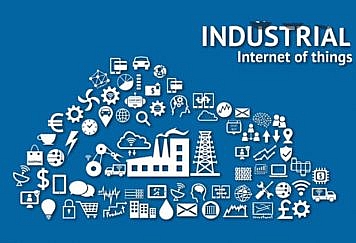These days, it appears as if the go-to-market approach is omnipresent. The term “PLG” has a lot of people scratching their heads. Here’s a crash course on the fundamentals.
Customers are acquired, activated, satisfied, retained, scalable, and expanded via the use of a Product-Led growth (PLG) strategy or approach. When a firm’s marketing, product, customer success, and other digital-facing departments rally around Product Led Growth(PLG) DevRev, the company is better equipped to give a unique and tailored product experience to custom product Led Growth(PLG) & DevRev,mers, resulting in higher customer retention and loyalty.
The sales force may be the primary source of income at organizations that aren’t product-driven, and customer success is essential to retaining customers. However, product-Led organizations have a distinct advantage in that their products become a revenue and retention source of their own, creating deeper engagement with consumers who find enormous value in the top-tier product and keep coming back for more. This is a crucial differentiator. There’s no need for human assistance to build client loyalty since the digital product experience develops it naturally, without the need for human interaction.
What does Product-Led growth look like in practice?
All employees of the organization must work together to redefine which measures and techniques lead to sustainable growth in order to achieve product-led growth. A company’s sales, marketing, and client retention strategies undergo a major shift as a result of this.
The PLG “machine” must be built around the product, and teams must be aligned on strategy as a business or team leader. One method to get the ball rolling on product-led growth is to provide people a clear opportunity to feel the value of your product before they buy it. So your product itself becomes a sales function, just like the people who sell it to customers on the other end of the phone.
With product-driven growth, you’ll be able to move more quickly with your money. It’s better to put your money into your product than to toss it at the next marketing gimmick. You don’t simply keep clients coming back if you prioritize the best-in-class product experience. You’re building a system for acquiring new clients.
How does PLG compare to other growth models?
The shift to product-driven growth is a direct response to the more conventional approaches of the previous generation. The employment of salespeople or marketing materials to persuade customers to buy a product has been around for a long time. Prior to making a purchase, PLG models encourage buyers to discover the product’s worth for themselves.
Users are more likely to try out a product if it is driven by product-Led growth, which offers the product free of charge. It is more probable that users will share the software with their colleagues and upgrade to a subscription plan that includes more licenses and extra features as they receive value from the product. Using this method, the product sells itself.
Growth models commonly used by companies include one or more of the following:
- Sales-Led
- Marketing-Led
- Product-Led
Each of the three models has a different internal alignment. Companies that are mostly sales-driven are designed to help the sales team succeed as the company’s principal income generator. When making decisions about anything from employee training to software purchases to marketing strategies, “Does this help the sales team win more deals?” is the underlying question.
The primary goal of marketing-driven businesses is to persuade customers of a product’s worth and meet their demands. As previously said, the company is structured to assist the marketing team in their endeavors to attract clients and generate leads The marketing team’s consumer research and advertising efforts attract users into the fold, but the sales team still plays a role in completing purchases. Marketing initiatives may make all the difference in pipeline and growth in a highly competitive industry where items are tough to identify.
In each approach, the prospect must be expressly informed of the product’s worth. Product-led businesses, on the other hand, place an emphasis on showcasing the true worth of their offerings. As an example, product-driven enterprises could provide a free trial or “freemium” membership instead of relying on outbound sales efforts to generate revenue. Allowing potential customers to test out a high-quality product before they buy it enables them to experience its advantages firsthand. You don’t need any persuading to convince customers of the worth of a product developed with this mindset.
Sales-Led vs. Product-Led Growth
In order to achieve sales-led development, a significant amount of effort and money must be put in at the beginning of the process. This includes hiring salespeople, creating marketing materials, qualifying leads, and maintaining customer relationships. While the benefits of product-led growth are more apparent, it still necessitates time and resources to discover what keeps customers interested.
As far as feasible, product-driven firms aim to reduce customer acquisition costs (CAC). It’s expensive to hire and train a large sales force. Investments in both digital and conventional marketing must be substantial and constant in order to be of any real value. Traditional sales and marketing tactics can still play a role in product-driven companies. When it comes to achieving your goals, it’s all about being strategic in your approach.
It’s still necessary to have sales and marketing teams in place at the end of the day so that you can sell your product. Sales and marketing techniques may both benefit from product-led growth, though. Vaporware is much more difficult to sell and promote than a well-received product.
Follow TechStrange for more!!





